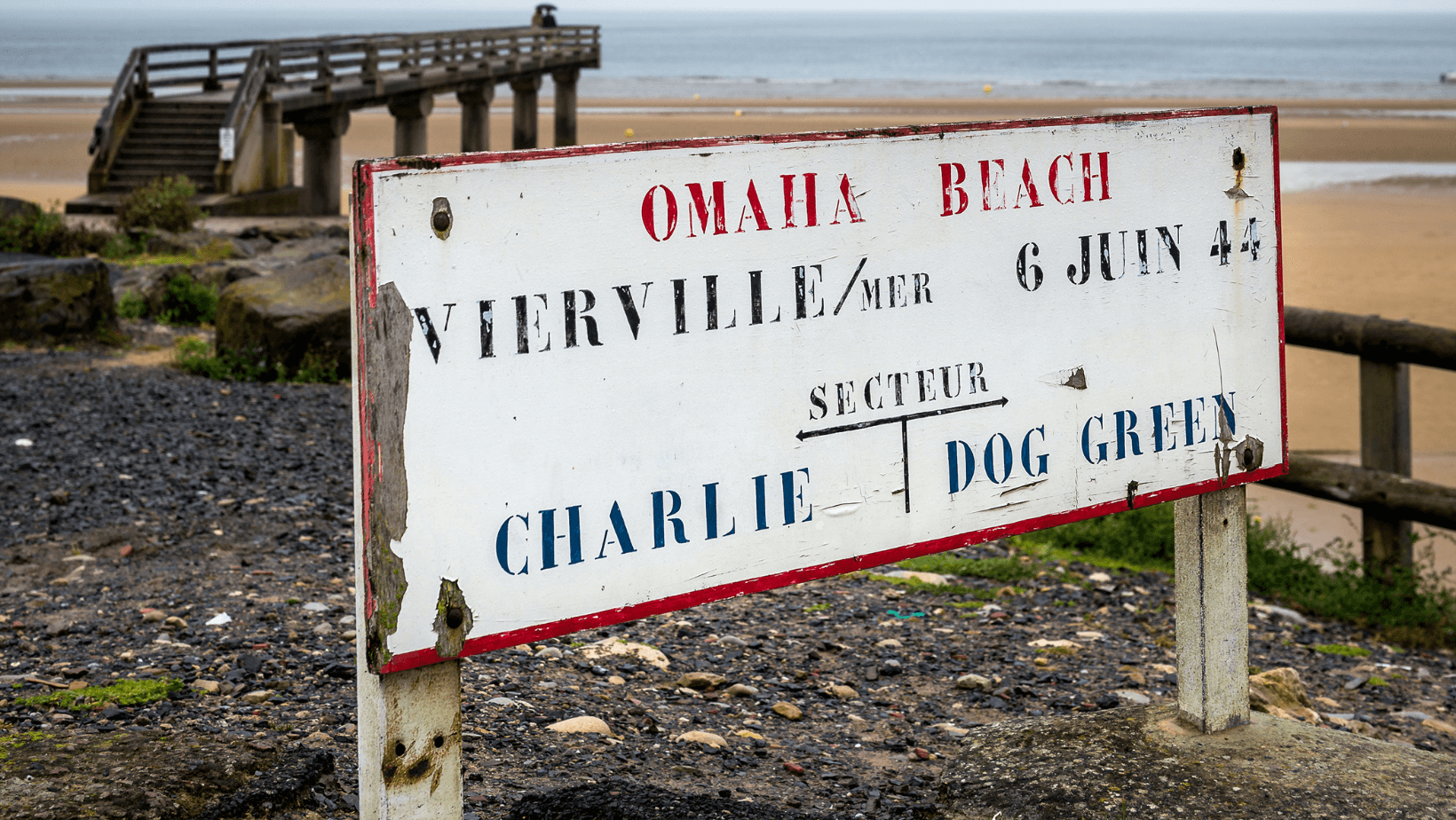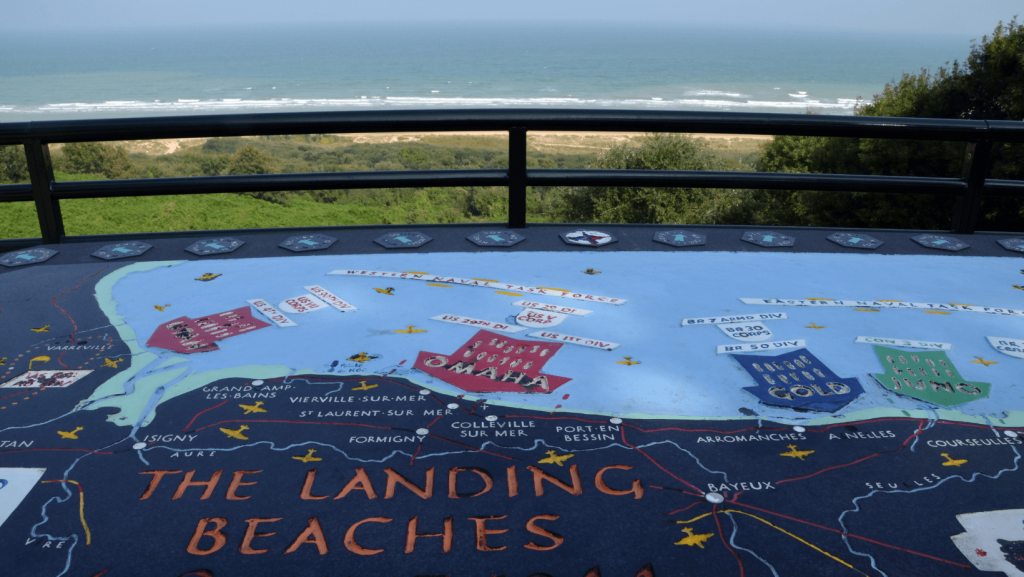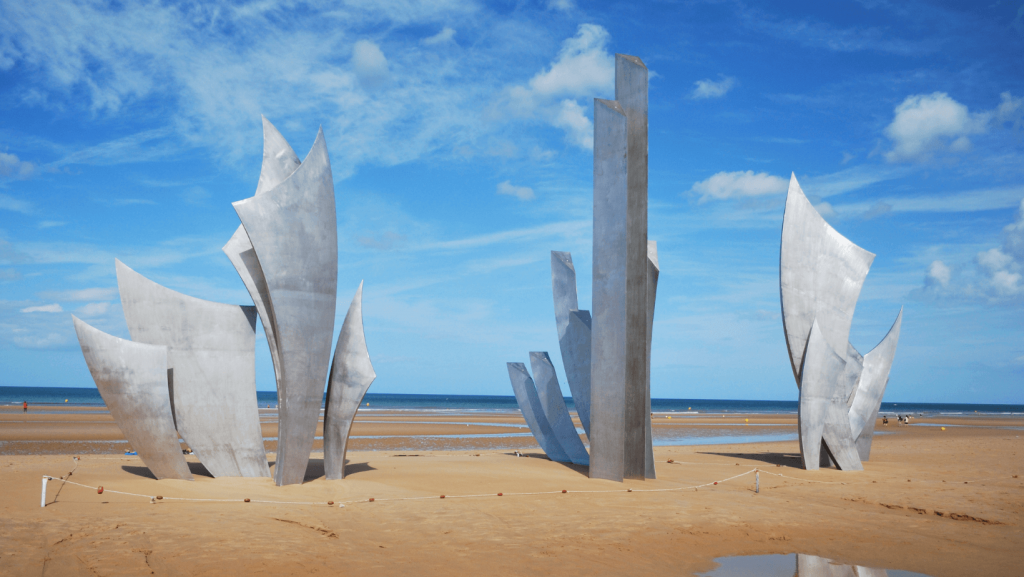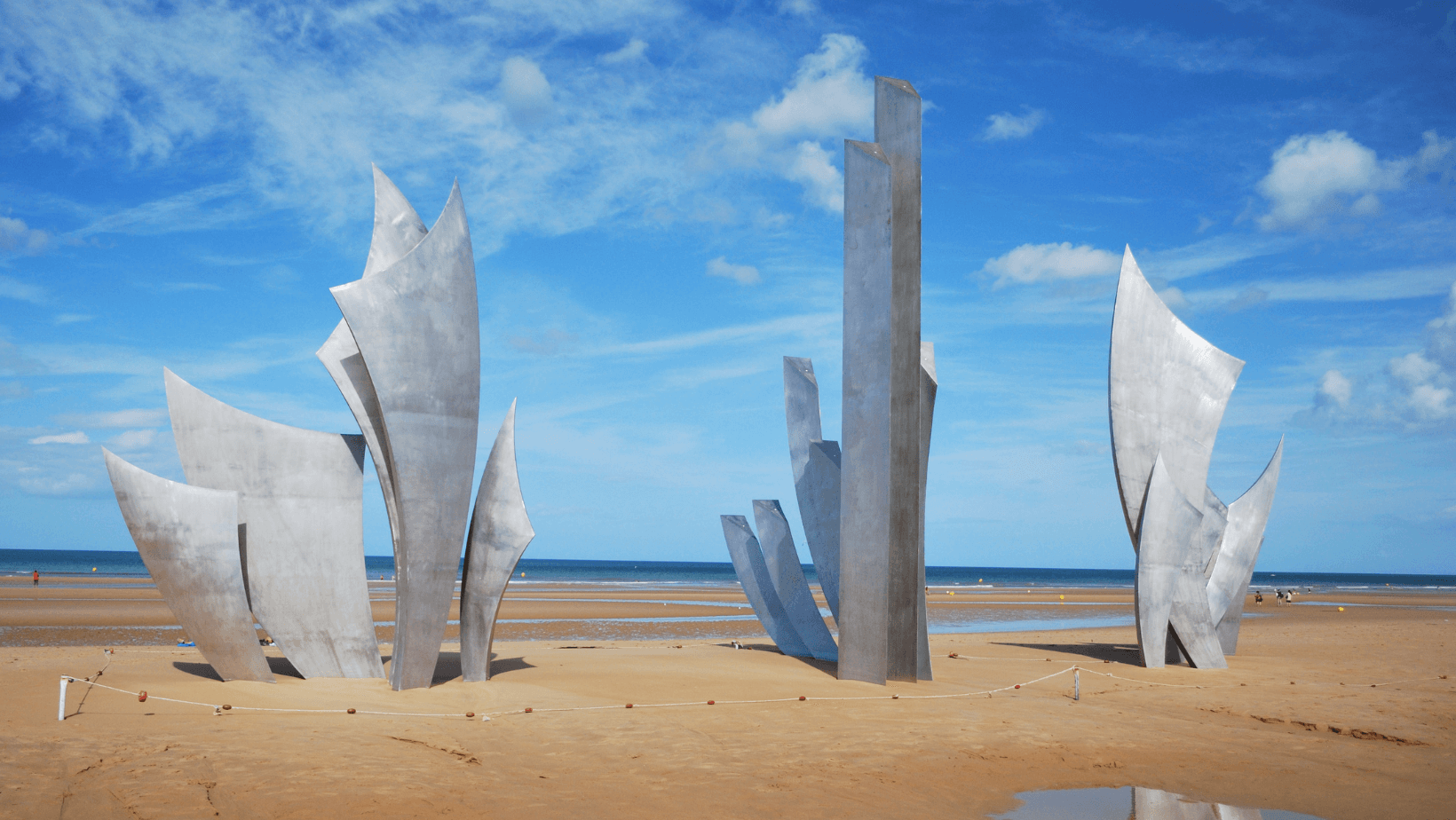
D-Day Background
Also known by several other names, including the Invasion of Normandy and Operation Overlord, D-Day was the largest amphibious military invasion in history. According to the D-Day Center, the invasion combined the forces of 156,115 US, British, and Canadian troops, 6,939 ships and landing vessels, 2,395 aircraft, and 867 gliders that delivered airborne troops.
Despite the term’s common use, there’s still debate as to what “D-Day” stands for. Some experts believe that the D stood for “day,” a code used for important military operations. Others have suggested that the name was selected for its alliteration, like “H-Hour,” when a military assault begins. And US General Dwight D. Eisenhower’s executive assistant, Brigadier General Robert Schultz provided yet another explanation, “Be advised that any amphibious operation has a ‘departed date;’ therefore the shortened term ‘D-Day’ is used.”
In order to pull off the massive military operation, the weather conditions needed to be just right. The day needed to be long to ensure maximum air power usage and a near-full moon was necessary to help guide ships and airborne troops. The tide also had to be just right – it needed to be strong enough to expose beach obstacles at low tide and float supply-filled landing vehicles far onto the beach during high tide. Forecasts initially showed nine potential dates in May and June that would match the necessary conditions, and June 5th was initially selected by commanders. But due to unfavorable weather conditions as the date approached, General Eisenhower made a last-minute decision to switch D-Day to the early hours of June 6th.

Operation Overlord
The Allied forces were faced with several key setbacks early in the invasion. Officially known as “Operation Overlord,” the invasion was divided among five sections of beachfront along the Normandy coast. They were codenamed, from West to East: Utah, Omaha, Gold, Juno, and Sword.
D-Day began with thousands of paratroopers landing inland on the Utah and Sword beaches in the pre-dawn hours of June 6th. Due to poor visibility, many were dropped far off their marks, which led to high casualty rates for US paratroopers at Utah Beach. Canadian and paratroopers met less resistance at Sword Beach and they were able to quickly take two key bridges.
More than 150,000 Allied ground troops stormed the five beaches with around 50,000 German troops facing them. Rough seas made the landings difficult, and at Omaha Beach, only two of the 29 amphibious tanks were able to make it to shore. The Omaha offensive turned out to be the bloodiest of the day, in large part because Army intelligence underestimated the German stronghold in the location. General Omar Bradley, leader of the Omaha forces, even considered abandoning the operation early on. But despite the many early setbacks, the Allied troops were able to advance their positions for overall success.

What Made D-Day Possible
Despite high casualties, all five beaches were secured by Allied forces by June 11th. This marked a key turning point toward victory against Hitler’s forces in World War II. Several factors helped contribute to the victory, including an Allied deception campaign that misdirected Hitler’s focus. While he knew that a large-scale invasion of France was likely, it was believed that the top candidate for the location was the French port city of Calais, where the German forces installed three massive gun batteries. In comparison, the rest of the French coastline – including the beaches of Normandy – was less fiercely defended.
Another contributing factor to the Allied victory was the decoding of the German code machine known as “Enigma.” Early in the war, a team of British and Polish experts led by Alan Turing cracked the machine’s code, which was previously believed to be unbreakable. This was kept a secret for years, allowing German plans to be hindered by the decrypted messages, including on D-Day. Codes intercepted before the invasion pinpointed nearly all of the German fighting units in the area. On D-Day itself, it also provided Allied commanders with updates on their troops’ progress more quickly than through their own communication channels.
The Allies’ eventual D-Day victory is widely considered to be a crucial turning point in the war. It allowed for a massive influx of troops and equipment that swung the momentum in favor of the Allied forces. Less than a year after the D-Day invasion, Germany signed an unconditional surrender on May 7th, 1945.
Weekly Trivia
Enter your guess to reveal the answer.

